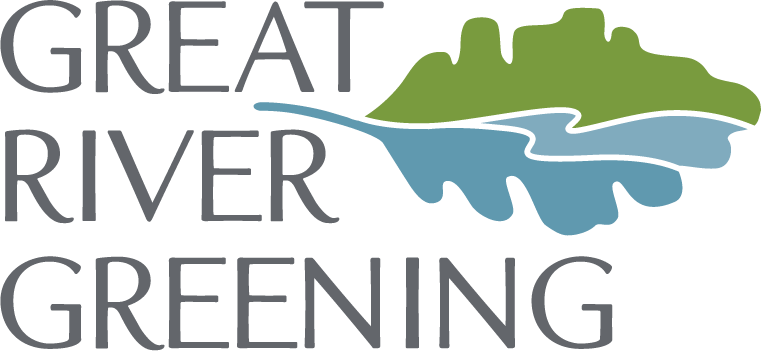Community-led Efforts to Cool Urban Heat Islands
The effects of climate change are becoming harder to ignore. Already we are experiencing its effects on Minnesota’s ecosystems and individuals. For example, Minnesota’s average annual temperature has increased by nearly 3°F since 1895, and 2023 has been a warmer-than-average summer so far. Although these effects can be felt throughout the state, they are felt more intensely in urban heat islands.
What is an urban heat island?
Urban areas that experience higher temperatures than the surrounding areas are known as heat islands. A variety of factors contribute to this effect including the higher concentration of buildings, roads, and other structures that absorb and re-emit heat from the sun and less greenery to provide shade. According to the Environmental Protection Agency (EPA), the heat island effect is felt in urban areas with average daytime temperatures about 1-7°F higher than in surrounding areas. This heat island effect lingers overnight, as well, with radiant heat from these same structures slowly releasing their pent-up heat.
In Saint Paul, nearly one third of the city is covered by tree canopy, but that coverage is uneven and inequitable both racial/ethnically and socioeconomically and leaves many neighborhoods within urban heat islands. In recent years, the heat island effect has been compounded by the devastating effects of the emerald ash borer (EAB), an invasive insect that damages and kills ash trees. In 2021 alone, the City of Saint Paul removed 3,000 ash trees and Saint Paul Public Schools removed 500, many in existing heat islands. Thousands more trees will be removed by 2024 due to EAB damage.
“Lack of tree canopy is an equity, public health, and environmental issue,” says Great River Greening Executive Director Kateri Routh. Heat islands lead to poor air and water quality, higher energy costs, and an increase in heat-related illnesses, deaths, and negative health outcomes. These impacts will intensify as our climate changes, temperatures rise, and we experience more extreme heat events in Minnesota.
So, what can we do?
Officially launched on Arbor Day 2023, Cool Saint Paul is a large-scale, multi-year tree planting initiative that aims to reduce the harmful effects of urban heat islands and improve quality of life in Saint Paul communities. This community-led initiative is in partnership with the City of Saint Paul, Saint Paul Public Schools, and community residents and aims to plant and maintain 200 trees annually on both public and private land throughout Saint Paul’s heat islands.
Like all our work, Cool Saint Paul is grounded in equity, partnership, and environmental justice. We engaged with community stakeholders in a focus group earlier this year. Now, several of these participants are active co-leaders working with us to shape the future of Cool Saint Paul. Their input on planting sites and selecting tree species keeps the community’s needs and interests in mind, which in turn improves the likelihood that the trees planted now will mature into a protective, resilient tree canopy, improving the health and economic vitality in these neighborhoods.
Want to help us plant 200 trees this year, and even more into the future? We will host a number of Cool Saint Paul volunteer stewardship events, beginning this fall. Sign up for our monthly newsletter to be notified when fall events are scheduled.
Photo Credits: A majestic maple tree towers overhead and provides cooling shade (Becca Tucker); Graphic comparing late afternoon temperature (in both Celsius and Fahrenheit) to various land cover types. Urban areas with more structures and fewer trees correlate to higher temperatures (Graphic source: Sky Space Green Roofs; Data source: Climate Conservative Consumer); Students at Benjamin E Mays IB World School in Saint Paul planting a northern catalpa tree on Arbor Day 2023 to shade their campus (Brennan Blue).
Thank you to our partners and funders:
F.R. Bigelow Foundation
Saint Paul & Minnesota Foundation



